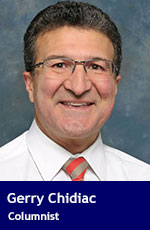 Those who advocate for human rights are often frustrated when crimes committed by those in power carry no apparent consequence. We need to remember, however, that truth never disappears.
Those who advocate for human rights are often frustrated when crimes committed by those in power carry no apparent consequence. We need to remember, however, that truth never disappears.
Roughly 100 years ago, Dr. Peter Bryce was commissioned by the Department of Indian Affairs to assess the health conditions at residential schools across Canada.
What he discovered was shocking. These institutions were breeding grounds for tuberculosis. Overall, the death rate was 24 per cent. In some places, it was as high as 75 per cent.
Clearly, this was vital information and the Canadian government should have taken action to preserve the lives of children.
But Bryce’s report to Indian Affairs deputy superintendent Duncan Campbell-Scott was ignored. Duncan Campbell-Scott’s department wasn’t willing to invest the resources needed to make the schools healthier.
Perhaps Campbell-Scott was under fiscal pressure from his government. But he also made the following disturbing statement: “I want to get rid of the Indian problem.”
In the end, Bryce was coerced into retirement. He did publish his findings in 1922 in a book called A National Crime, but it was largely ignored by the Canadian public. He died 10 years later, never knowing the significance of his work.
In the 1990s, Bryce’s reports resurfaced and became a groundwork piece in cases brought against the federal government. The ultimate result was the 2008 apology by Prime Minister Stephen Harper and Truth and Reconciliation Commission Report of 2015.
Until then, even Bryce’s family members had no idea of the legacy the principled doctor had left behind.
More recently, human rights activists, church groups and other international watchdogs have noted American involvement in crimes against humanity, and even what could arguably be called genocide, in Central America. This was rarely even reported in the mainstream media, and few held hope that the U.S. government or any individual working for the state would ever be held accountable.
Then came the Congressional elections of 2018, which included the election of Representative Ilhan Omar of Minnesota. She is one of the first two Muslim women, the first Somali-American and the first African-born naturalized citizen ever to be elected in the United States. Given this background, one can understand why she has become a strong advocate for social justice.
In a recent House of Representatives foreign affairs subcommittee meeting, she took on Elliott Abrams, American special envoy for Venezuela and long-serving American diplomat. She queried him about his involvement in alleged war crimes in Latin America since the Reagan era. Omar cited numerous reports of American-backed atrocities in El Salvador, Nicaragua and Guatemala.
Though this was by no means a court of law and it’s unlikely Abrams will ever be put on trial, the fact that this is being openly discussed by American lawmakers is a clear indication that the truth is coming to the surface.
It will not be long until the American population begins to see the link between the throngs of people fleeing to their southern border and covert U.S. military operations in Latin America.
When first learning about genocide and other crimes against humanity, my students are often horrified by what happened in the past.
In response, I ask them, “How will history judge us 50 or 100 years from now?” What will be our legacy? Will we be Peter Bryce, Duncan Campbell-Scott, Elliott Abrams, Ilhan Omar, individuals who seek to change the world or people who choose to turn a blind eye to injustice?
The victors may control the mainstream media and write history books, but they don’t determine what actually happened.
The truth always comes out and truth always liberates. When we look honestly at history, we give meaning to the sacrifices of our ancestors. We are thus inspired to improve the present and build a better future for our descendants.
Troy Media columnist Gerry Chidiac is an award-winning high school teacher specializing in languages, genocide studies and work with at-risk students.
The views, opinions and positions expressed by columnists and contributors are the author’s alone. They do not inherently or expressly reflect the views, opinions and/or positions of our publication.


